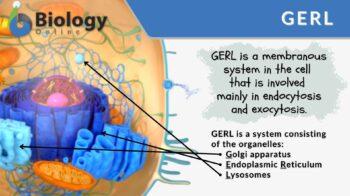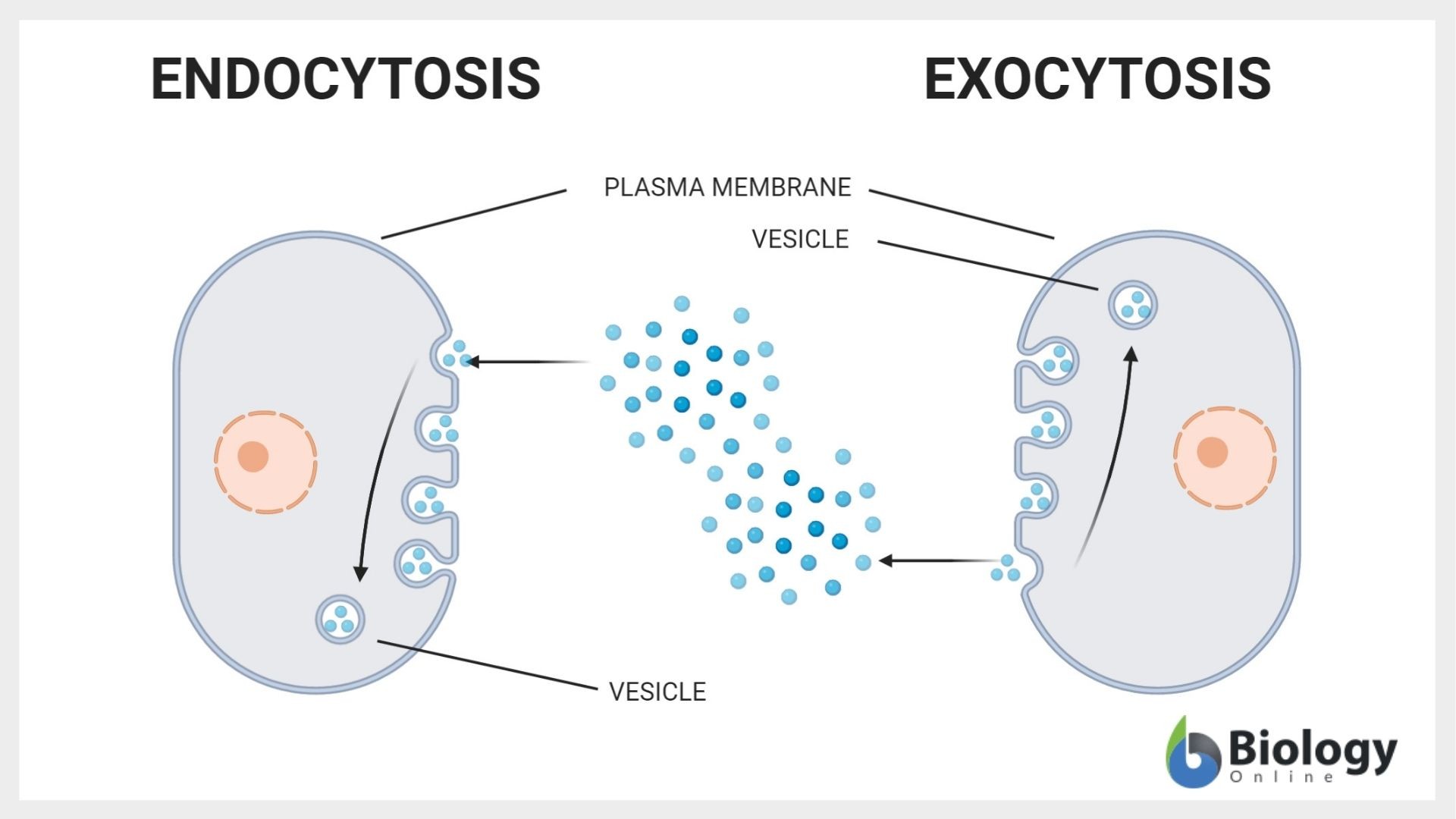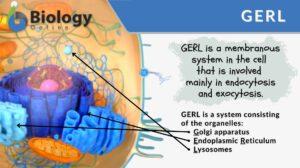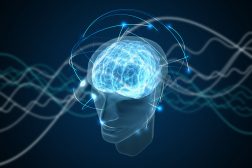
GERL
n.
Definition: a membranous system in the cell involved mainly in endocytosis and exocytosis
Table of Contents
GERL Definition
GERL is the acronym for Golgi – Endoplasmic Reticulum – Lysosome complex, a system found in the cell and consists of the Golgi apparatus, endoplasmic reticulum, and lysosomes. The system is mainly to perform endocytosis and exocytosis.
GERL Composition
The GERL system is associated with biological processes such as endocytosis and exocytosis. It is comprised of (1) Golgi apparatus, (2) endoplasmic reticulum, and (3) lysosome.
Golgi apparatus
The Golgi apparatus is made up of cisternae origination from the vesicles that bud off from the endoplasmic reticulum. The stacks are comprised of fused, flattened cisternae that are linked together by tubular (microtubules) connections. Without these microtubules, the Golgi becomes comprised of individual disks. In plants, the stacks are connected not by microtubules but by actin. The Golgi cisternal stack has a cis and a trans faces. The cis is the entry face whereas the trans is the exit face. They contain differing metabolic enzymes. In the cis face cisternae, the enzymes present are those involved in the early modifications of proteins whereas, in the trans face, the enzymes are involved in the final protein modification.
The Golgi apparatus is the organelle referred to as the package center of the cell since its main function is to package molecules for secretion. It sorts out the proteins secreted by the endoplasmic reticulum into packages to be sent to the appropriate destination. The Golgi apparatus may modify the protein by adding sugar to produce glycoprotein through glycosylation with the help of glycosylation enzymes. It is as if it marks or labels the biomolecule where it should go next in the pathway. The glycoprotein that is bound to be transported outside the cell will be transported as vesicles. If the glycoprotein is for later use, it may be stored in vesicles within the cell. Apart from this, the Golgi is also involved in the transport of lipids around the cell, and the creation of lysosomes.
Endoplasmic reticulum
The endoplasmic reticulum is a network of flattened sacs in which the membranes are connected to the nuclear membrane. Its membranes may also extend to the cell membrane. There are two types of endoplasmic reticulum, i.e. rough (RER) and smooth (SER). The RER bears many ribosomes on its outer surface giving it a rough appearance. In contrast, the sER does not have ribosomes attached to its outer surface thus making it relatively smoother. While the RER is involved in protein synthesis and secretion, the SER is involved in lipid synthesis, drug detoxification, intracellular transport, etc.
Lysosome
The lysosome is a spherical organelle containing a wide range of digestive enzymes. The digestive enzymes are used mainly for the digestion and removal of excess or worn-out organelles, food particles, and engulfed viruses or bacteria. The lumen of the lysosomes has a pH ranging from 4.5 to 5.0, which is optimal for the enzymes for hydrolysis. The lysosome is able to maintain this optimal pH by pumping in protons (H+ ions) from the cytosol via its proton pumps and chloride ion channels.
Watch this vid about the GERL system:
Biological Functions of GERL
The GERL complex is a system to carry out the following cellular processes:
- Endocytosis of external materials
- Exocytosis of internal substances
- Synthesizing or recycling of materials, and removal of wastes
Endocytosis
Endocytosis is a process in which a cell takes in particulates from the outside by engulfing and fusing them with its plasma membrane. Examples are phagocytosis, which literally means cell eating, and pinocytosis, which literally means cell drinking. The particulate is taken into the cell and then surrounded by a portion of the cell membrane. The resulting vesicle containing the particulate is taken to the endosome and eventually to the lysosome for degradation.
Exocytosis
Exocytosis is a process in which the cell takes molecules out of the cell. In this process, the vesicle containing molecules is shuttled towards the cell membrane to release the contents into the extracellular environment. For instance, protein is synthesized at the ribosome that is docked via the translocon protein spanning the membrane of the endoplasmic reticulum. As the chain grows, it enters the lumen of the rough endoplasmic reticulum via the translocon.
The nascent peptide then folds and is packed into a transport vesicle. The vesicle containing the protein moves along the cytoskeleton to reach the Golgi apparatus. The vesicle empties its content into the lumen of the Golgi. There, the protein goes through post-translation modifications. After that, the protein that is meant to be released outside the cell is shuttled by a vesicle along the cytoskeleton towards the cell membrane.
The vesicle then fuses to the plasma membrane to release the proteins outside the cell (the process is referred to as regulated secretion). This is what happens when a neuron releases neurotransmitters upon stimulation. Vesicles that contain digestive proteins (e.g. proteases) and other lysosomal proteins would have to be shuttled to the late endosome first before the contents are transported to the lysosome.

Answer the quiz below to check what you have learned so far about GERL.
Further Reading
- Protein Synthesis – Definition, Steps, and Examples
- Role of Golgi Apparatus & Endoplasmic Reticulum in Protein Synthesis
© Biology Online. Content provided and moderated by Biology Online Editors








